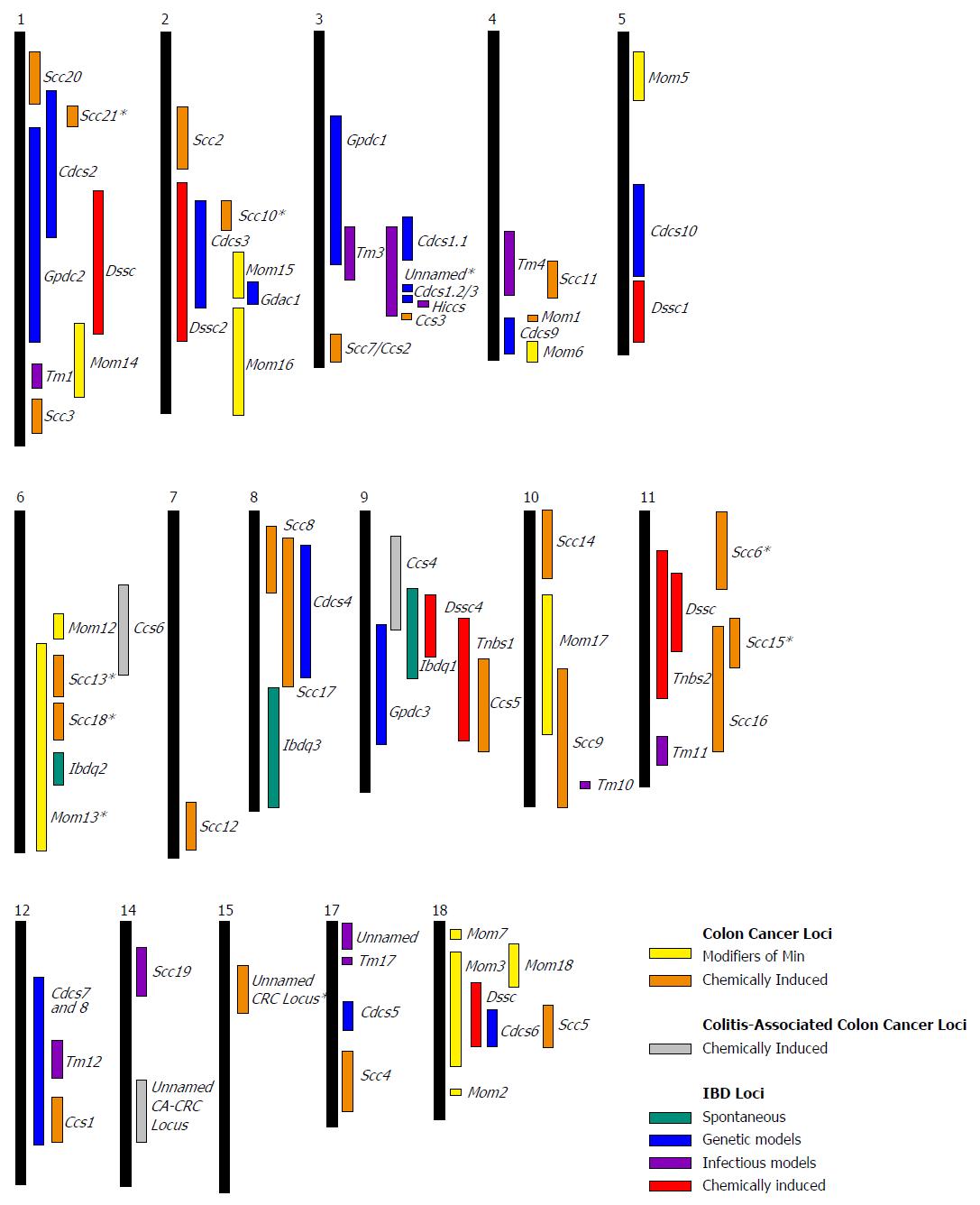Copyright
©The Author(s) 2015.
World J Gastroenterol. Nov 7, 2015; 21(41): 11688-11699
Published online Nov 7, 2015. doi: 10.3748/wjg.v21.i41.11688
Published online Nov 7, 2015. doi: 10.3748/wjg.v21.i41.11688
Figure 1 Progression of colitis-associated colorectal cancer.
Colitis-associated colorectal cancer progresses through a colitis-dysplasia-carcinoma sequence associated with the development of inflammation, low-grade, high-grade dysplasia and eventually carcinoma due to molecular alterations. IBD: Inflammatory bowel disease; ROS: Reactive oxygen species.
Figure 2 Mouse inflammatory bowel disease and colorectal cancer susceptibility loci.
Summary of the current inflammatory bowel disease and colorectal cancer (CRC) loci mapped in inbred mice using forward genetic studies. Arranged by chromosome, each locus has been drawn to scale based on the current mapping data for each. Putative loci or loci that lack mapping data have been excluded. Loci whose precise map location is unknown (indicated with a *) have been drawn centered over the peak marker of association. Ccs: Colon cancer susceptibility; Cdcs: Cytokine deficiency in colitis (Il-10-/- mouse model of colitis); Dssc: Dextran sulfate sodium-induced colitis; Gpdc: G protein deficient colitis; Hiccs: Helicobacter hepaticus-induced colitis and associated cancer susceptibility; Ibdq: Inflammatory bowel disease quantitative trait loci (Spontaneous SAMP1/YitFC model of colitis); Mom: Modifier of min (ApcMin+/- model of CRC); Scc: Susceptibility to colon cancer; Tm: Trishuris muris-induced colitis; Tnbs: Trinitrobenzene sulfonic acid susceptibility.
- Citation: Van Der Kraak L, Gros P, Beauchemin N. Colitis-associated colon cancer: Is it in your genes? World J Gastroenterol 2015; 21(41): 11688-11699
- URL: https://www.wjgnet.com/1007-9327/full/v21/i41/11688.htm
- DOI: https://dx.doi.org/10.3748/wjg.v21.i41.11688










